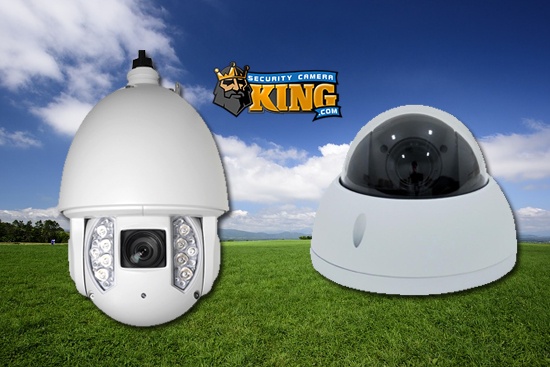Infrared and Night Vision Cameras
Hey everyone, SCK here with an awesome article talking some frequently asked questions and info on Infrared and Night Vision cameras. As we all know, CCTV or closed-circuit television is extremely important to maintaining the security of any given location. Utilizing CCTV cameras, cabling, and recorders, property owners and managers can keep an ever-watchful eye on their locations. Not only are you able to view this footage live, but the recorders to the work of, well, recording that data onto hard drives. If there an incident that needs to be referenced at a later time, you can now poll that recorder for this video footage. Even simply having visible, strategically placed CCTV cameras on site are themselves a deterrent. A criminal is far more likely to trespass or follow through with a break-in if they feel they are not being watched. The moment they see a CCTV system on-site though, statistics show most of the time they change their mind and never even attempt the break-in.
In today’s ever-growing technological landscape, the tools that allow us to have more effective and secure CCTV even better are becoming more powerful and offering new features all the time. This enhances our ability to do things such as know when and where an incident might have taken place, or at least have an idea of that much better than simply having to search through footage. Features such as motion detection, IVS tripwire, and intrusion ox, give u the ability to set trigger rules so that when somebody or something moves in a given scene, this data I slogged. This allows you to search specifically for incidents of these types which greatly reduces your sifting time searching through footage. There are even advanced AI features today such as facial capture and recognition that can really add to what CCTV can do. All these advanced features are great, but what about dealing with some more fundamentally basic problems? What about nighttime, darkness, lack of light? How do CCTV cameras solve this more basic issue?
As you may already know, cameras work much like the human eye, or any eye, in that they require light to be able to see and capture footage. Light reflects off of various objects in the world and is bounced all over the place Our eyes, and cameras can take in this light. Biologically we process that into the footage using a series of nerves and cones and our brains. Camera use lenses, and digital hardware -though at one time they used film and some even still do (though just not really in CCTV anymore). At night, and in buildings where the lights are out like many places at closing time, this presents a problem for security cameras. When you’re away, and the lights are off, is when you need those CCTV cameras more than ever- so how do they see in the dark?
There are a few awesome techs utilized on the cameras we carry here at SCK. Just about every camera we carry falls under the category of “Infrared and Night Vision Cameras”. This is because infrared is such a common feature nowadays. We were talking about light earlier and how we all need it to see, both us and cameras. Well, there are actually many different kinds of light out there, and many of those types -or wavelengths- of light are actually totally invisible to the human eye. Now, as we know from breathing air we can’t see, being invisible doesn’t mean ‘not there’. Infrared is a type of red light wavelength that we can build cameras capable of viewing, even though we ourselves cannot see it. In fact, almost every single camera we carry comes equipped with infrared night-vision capabilities.
How this works is fairly simple, the camera bathes the area in infrared light, which despite our inability to perceive it is actually very bright for very little power and protection cost. The camera is equipped with a lens that can see the infrared light, and this is able to see the surrounding image. Since black and white is easier for the eyes to see than the image the camera would otherwise process, a monochrome filter is then processed onto the image to make it appear black and white. This helps discern specific details and is why ‘night vision’ on these types of cameras is also black and white.
In addition to these night shot methods, we also carry two other types of technologies for seeing better in the dark. The first is starlight technology. this technology enhances the camera’s ability to see with lower than optimal light, while still remaining in color mode. For places like large warehouses or hangars, marina or docks, outdoor parking lots that have decent light until and through the early evening- you’ll enjoy being able to see in color longer. Additionally, when the light drops further than this, the IR will engage and starlight tech works with your cameras Ir to enhance the image. Even more, details will be discernable with IR cameras enhanced with starlight tech.
The last is full Color, and these cameras have infrared if needed but are equipped with front-mounted bright white illumination LEDs which allow the camera to see at night in color by producing its own dedicated light source.
Check these out: Full Color Camera
For more info on Infrared and Night Vision Cameras, give our sales pros a call at 561 288 5258!
Find us on:
Facebook | Twitter | YouTube
Related Media: Solar Powered Security Camera System












